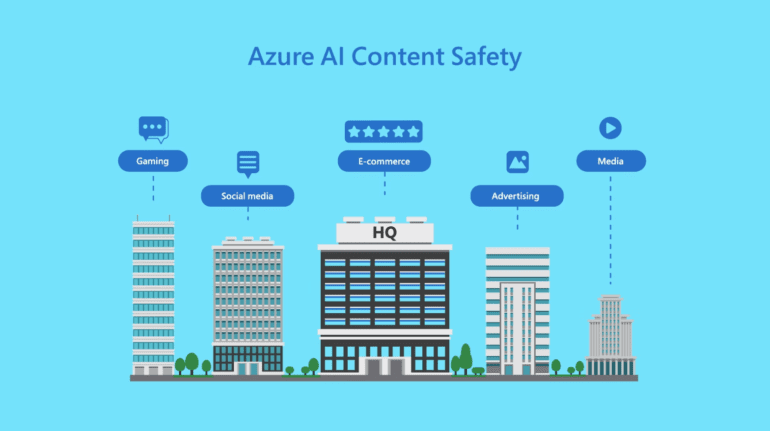TL;DR:
- Microsoft introduced Azure AI Content Safety, a service for detecting harmful content in text and images.
- The service covers offensive, risky, and undesirable content, including profanity, violence, and more.
- It offers comprehensive safety measures, encompassing various content categories, languages, and threat levels.
- A severity metric rates content from 0 to 7, helping categorize the level of harm or inappropriateness.
- Azure AI Content Safety also uses multicategory filtering to identify harmful content across critical domains.
- The service operates on a pay-as-you-go pricing model, ensuring accessibility for users.
Main AI News:
In a bold move towards fostering a safer digital landscape, Microsoft has officially launched Azure AI Content Safety, an innovative service designed to empower users in detecting and filtering detrimental AI- and user-generated content across a wide spectrum of applications and services. This groundbreaking solution incorporates both text and image detection capabilities, meticulously identifying content that falls under Microsoft’s definition of “offensive, risky, or undesirable.” This encompassing definition includes profanity, adult content, gore, violence, and specific categories of speech.
Louise Han, the product manager for Azure Anomaly Detector, articulated the importance of this advancement, stating, “By prioritizing content safety, we can cultivate a digital environment that encourages the responsible utilization of AI and, in turn, safeguards the well-being of individuals and society as a whole.” Her sentiments were echoed in a blog post announcing the launch.
Azure AI Content Safety distinguishes itself by its capacity to manage diverse content categories, languages, and threats, providing a comprehensive approach to moderating both text and visual content. It leverages cutting-edge image features, empowered by AI algorithms, to conduct thorough scans, analyses, and moderation of visual content, ensuring what Microsoft aptly terms “360-degree comprehensive safety measures.”
Furthermore, this service boasts the capability to moderate content in multiple languages and employs a nuanced severity metric. Content is rated on a scale from 0 to 7, with content rated 0-1 being considered safe and suitable for all audiences. Content expressing prejudiced, judgmental, or opinionated views falls into the 2-3 range, indicating low severity. Medium severity content, rated at 4-5, contains offensive, insulting, mocking, or intimidating language, along with explicit attacks against identity groups. High severity content, categorized as 6-7, comprises material that promotes harmful acts explicitly or endorses and glorifies extreme forms of harmful activity targeting identity groups.
Azure AI Content Safety goes even further by utilizing multicategory filtering to pinpoint and categorize harmful content across a spectrum of critical domains, including hate, violence, self-harm, and sexual content.
As Han emphasized, “When it comes to online safety, it is crucial to consider more than just human-generated content, especially as AI-generated content becomes prevalent.” Ensuring the accuracy, reliability, and absence of harmful or inappropriate materials in AI-generated outputs is essential. Content safety not only shields users from misinformation and potential harm but also upholds ethical standards and fosters trust in AI technologies.
Azure AI Content Safety operates on a pay-as-you-go pricing model, providing flexibility and scalability to meet the diverse needs of users. Interested parties can explore pricing options on the Azure AI Content Safety pricing page, reaffirming Microsoft’s commitment to making this vital tool accessible to all.
Conclusion:
Microsoft’s Azure AI Content Safety marks a significant step towards promoting digital safety and responsible AI use. By providing a comprehensive solution for content detection and moderation, it addresses the growing need to protect individuals and uphold ethical standards in an evolving digital landscape. This development signifies a substantial contribution to the market, offering businesses and users a powerful tool to ensure safer online experiences and build trust in AI technologies.

